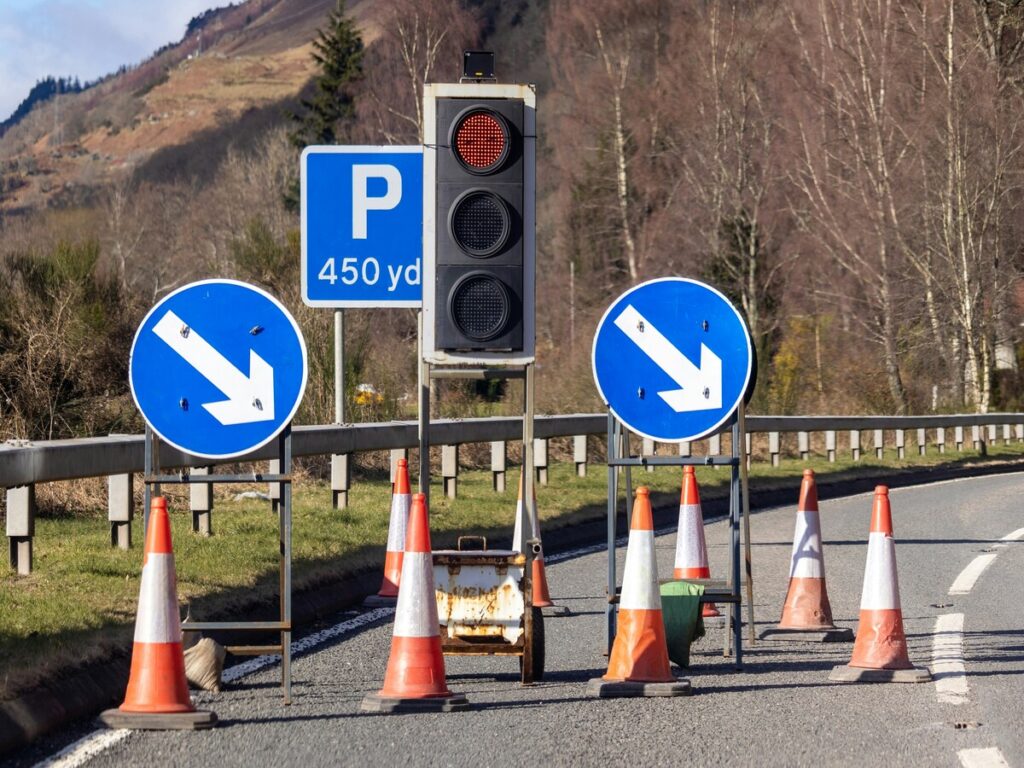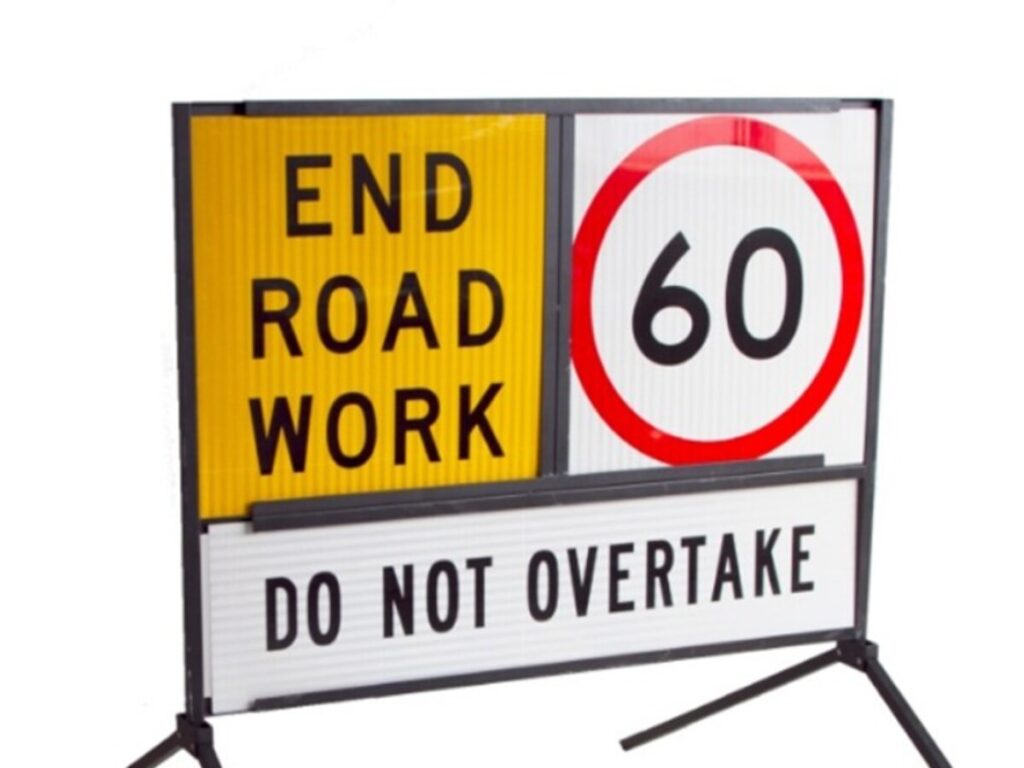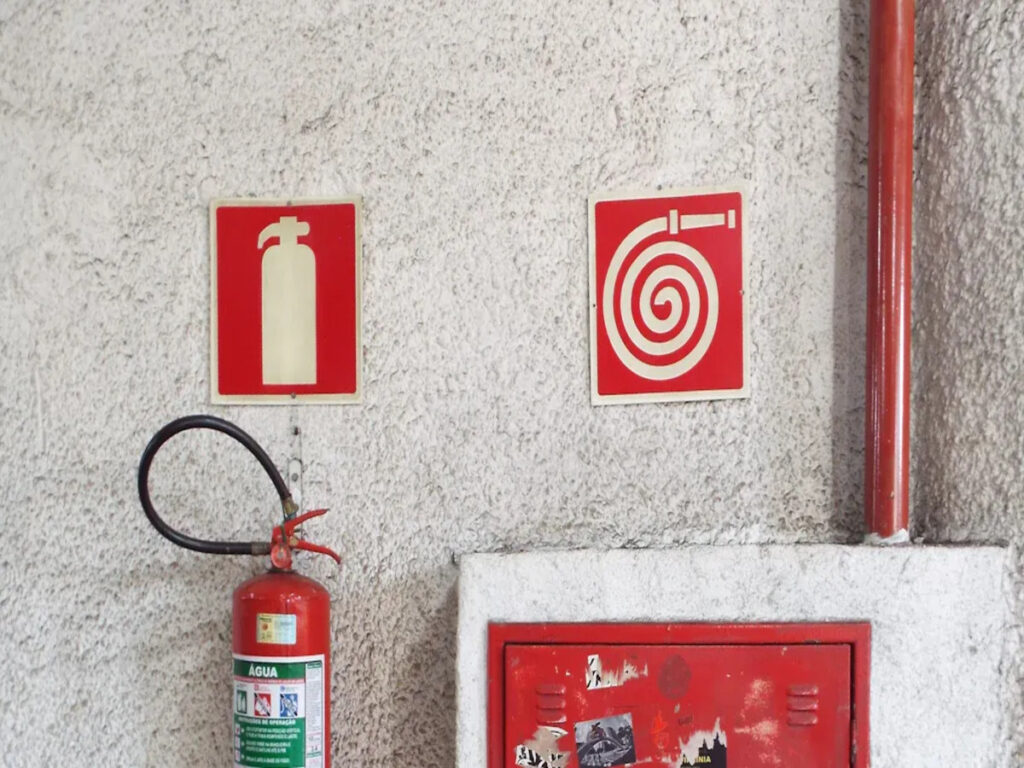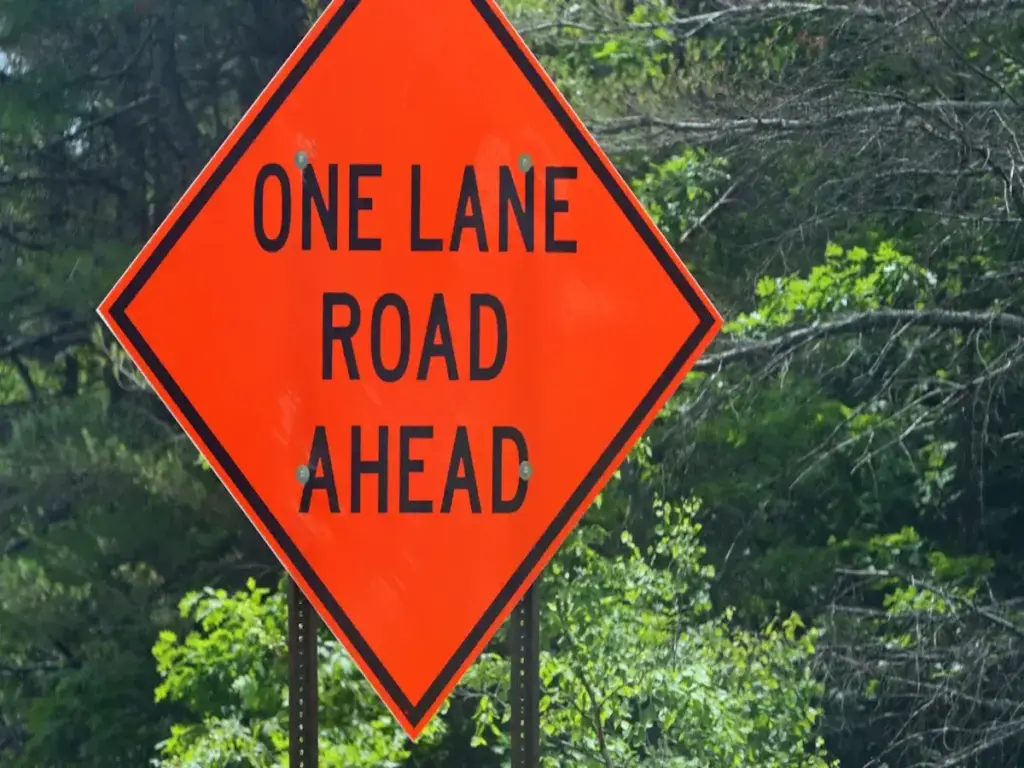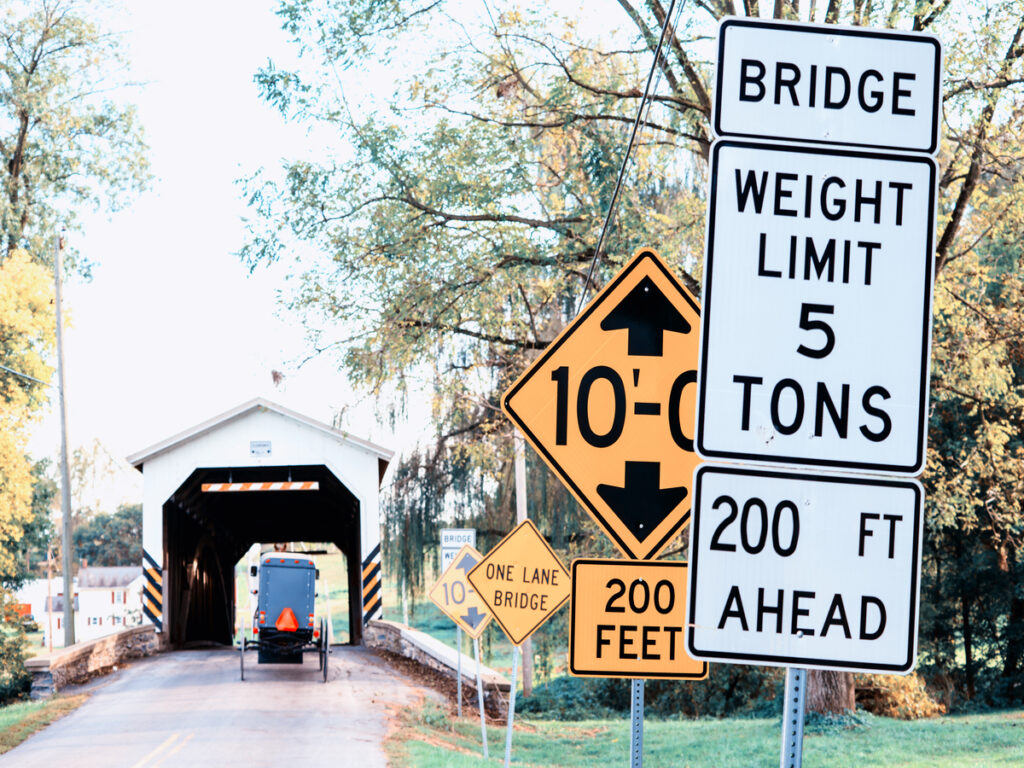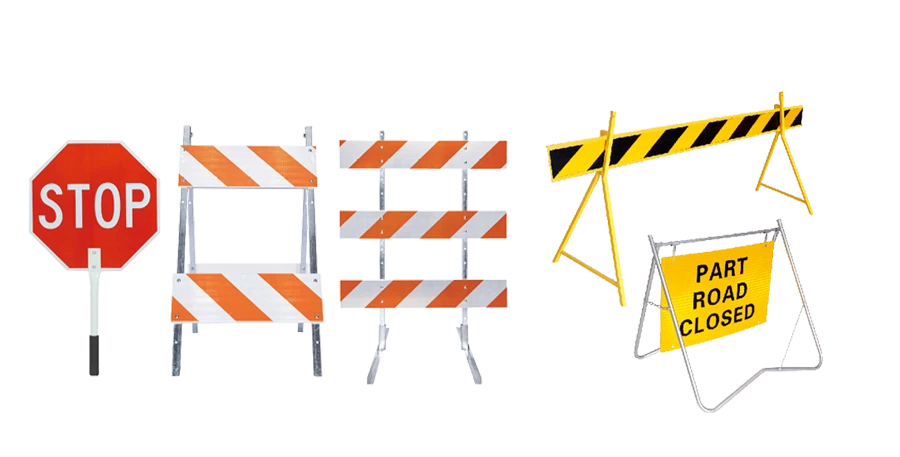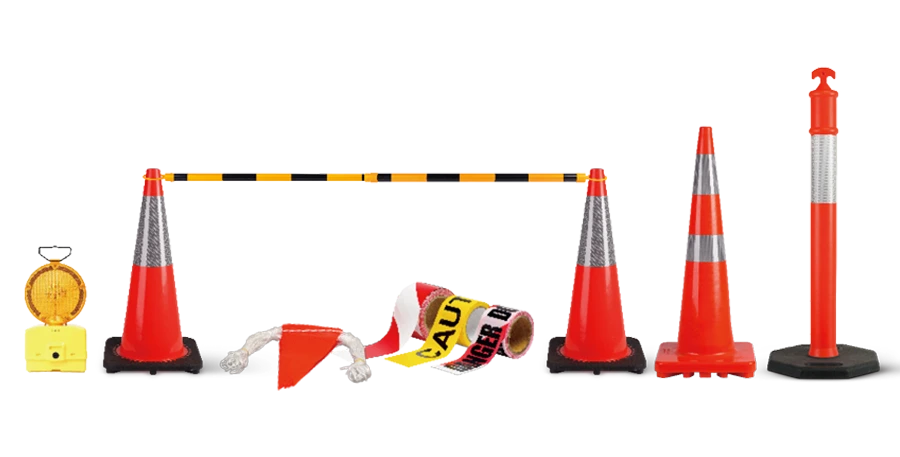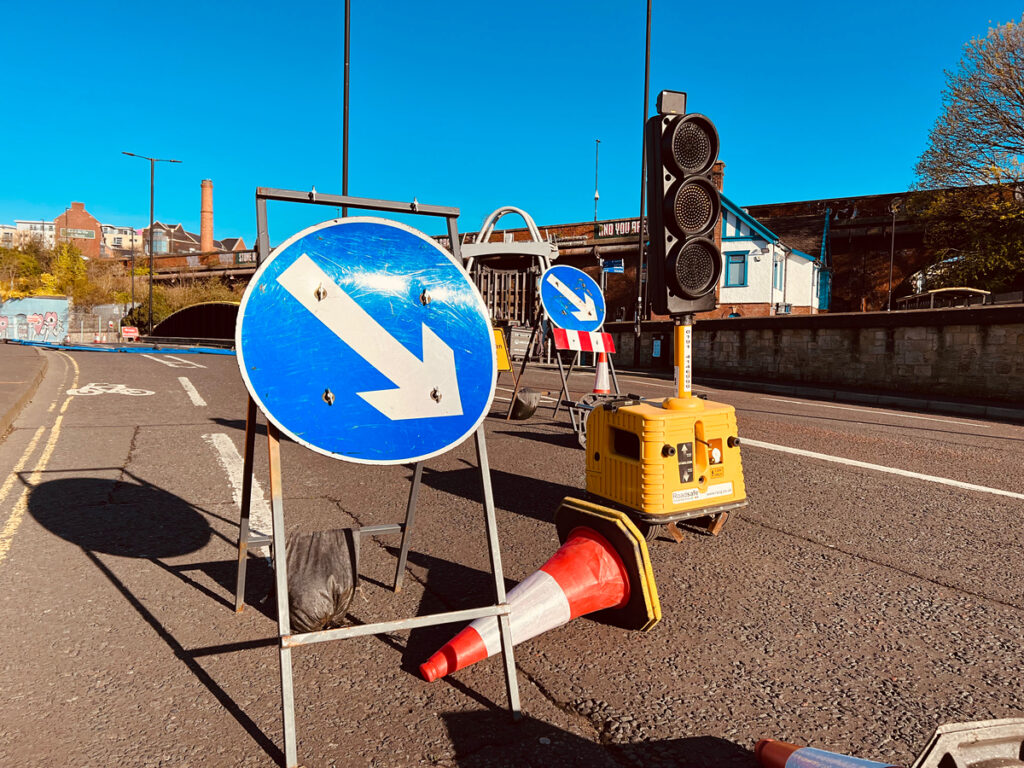
Règles Mutcd sont importants pour la sécurité routière et les normes juridiques. Les cadres de panneaux de trafic portables qui suivent ces règles réduisent les risques et aident le trafic à mieux déplacer. L'utilisation du bon équipement peut arrêter les accidents et les blessures. Par exemple, au Texas, Les zones de travail avaient 35% Moins de plantages de travailleurs automobiles. En Californie, Les blessures sont tombées 25%. Les zones avec des outils appropriés avaient également jusqu'à 50% Moins d'accidents. Ces faits montrent que la suite de règles MUTCD rend les zones de trafic temporaires plus sûres et plus efficaces.
Tandis que MUTCD établit la norme aux États-Unis, D'autres régions ont leurs propres réglementations pour le contrôle temporaire du trafic. Pour voir comment les États-Unis. se compare à l'UE et à l'Australie, Consultez notre guide complet: États-Unis vs UE vs Australie: Comment les cadres de panneaux de route diffèrent dans les normes et la pratique.
Principaux à retenir
- Les matériaux réfléchissants facilitent les panneaux la nuit. Les conducteurs peuvent repérer les panneaux de loin, ce qui réduit les chances de plantages.
- Les panneaux de signalisation ont besoin de contrôles réguliers pour rester en sécurité. Regardez leur taille, force, et visibilité pour suivre les règles et protéger tout le monde.
- Apprenez à votre équipe sur les règles MUTCD pour éviter les erreurs. Les travailleurs formés peuvent configurer les signes de la bonne façon, Amélioration de la sécurité et du flux de la circulation.
- L'achat de cadres approuvés par MUTCD permet d'économiser de l'argent à long terme. Des matériaux forts durent plus longtemps et ont besoin de moins de réparations, En faire un choix intelligent.
Comprendre mutcd et pourquoi c'est important
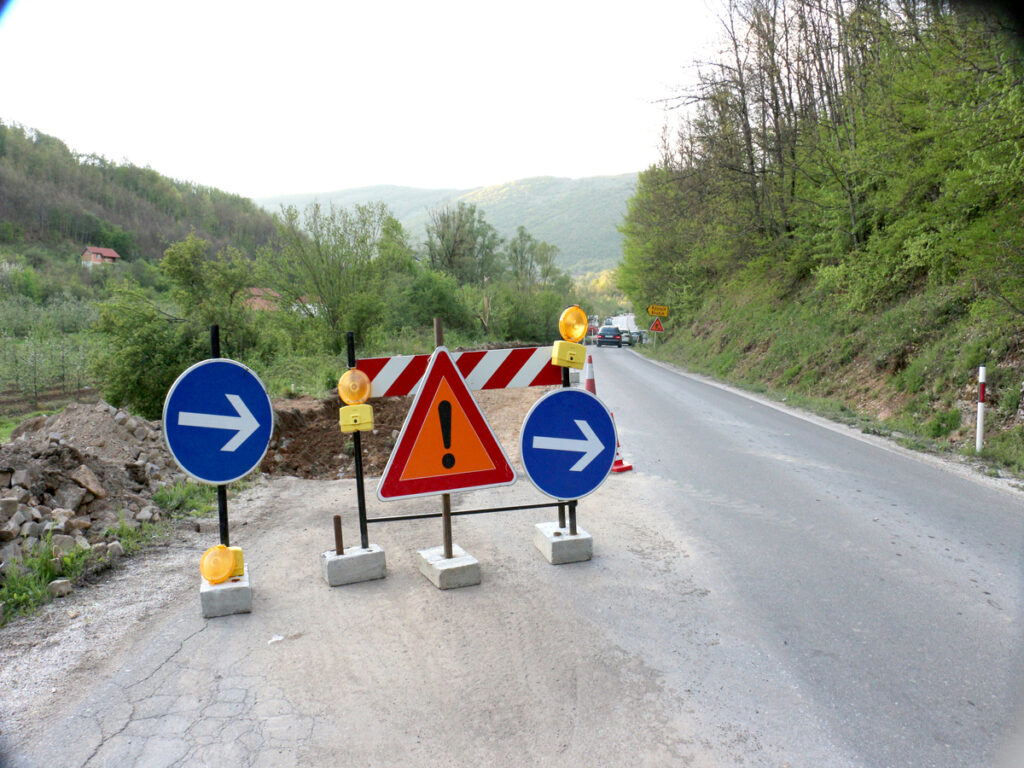
Qu'est-ce que le mutcd?
Le MUTCD est un guide pour les panneaux de circulation, signaux, et marques. Il s'assure que les routes ont des signes clairs et cohérents partout aux États-Unis. Le Administration des routes fédérales (Fhwa) gère le mutcd. Au fil du temps, Il a changé pour répondre aux besoins de trafic moderne. La première version est sortie 1935. Depuis lors, Il y a eu neuf mises à jour pour améliorer le contrôle du trafic.
| Année | Événement / description |
|---|---|
| 1927 | Aasho a fait un guide pour les routes rurales. |
| 1930 | NCSHS a créé un guide pour les rues de la ville. |
| 1935 | First Mutcd publié par Aasho et NCSHS. |
| 1971 | FHWA a repris la gestion de Mutcd. |
L'apprentissage du MUTCD montre comment il aide à rendre les routes plus sûres.
Pourquoi les règles MUTCD sont importantes pour la sécurité
Les règles MUTCD aident à prévenir les accidents et à améliorer la sécurité routière. Ils s'assurent que les panneaux et les signaux sont faciles à voir et à lire. Par exemple, Le MUTCD répertorie les conditions pour l'ajout de feux de circulation. Il s'agit notamment des numéros de piétons, Historique des accidents, et les temps de trafic chargés.
- Garantir 1: Volume de trafic de huit heures
- Garantir 4: Numéros de piétons
- Garantir 7: Historique des accidents
Suivre ces règles rend les routes plus sûres pour tout le monde. Des mises à jour comme de meilleurs passages pour piétons et des balises clignotantes aident les gens à voir les panneaux et à éviter les accidents.
Conformité MUTCD dans les zones de circulation temporaires
Zones temporaires, comme les chantiers de construction, doit suivre les règles mutcd. Ces règles garantissent que les signes et les barrières sont placés pour assurer la sécurité des gens. Les cadres de panneaux portables doivent répondre aux normes de hauteur et de stabilité. Les matériaux réfléchissants facilitent les signes de la nuit ou en basse lumière.
| Dispositif de trafic | But |
|---|---|
| Boîtes de virage en deux étapes | Vérifiez si les conducteurs et les motards les utilisent en toute sécurité et correctement. |
| Chaussée rouge dans les voies de transit | Tester s'il améliore la sécurité et fonctionne bien pour les voies de transport en commun uniquement. |
L'utilisation des règles MUTCD garantit que les zones temporaires sont sûres et fonctionnent bien.
Règles clés pour les cadres de panneaux de trafic approuvés par MUTCD
L'utilisation de règles MUTCD pour les cadres de panneaux portables protège les routes. Ces règles se concentrent sur la hauteur des signes, réflectivité, et lisibilité. Voyons-les.
Règles pour la hauteur et le placement des signes
Les panneaux doivent être suffisamment élevés pour que les conducteurs puissent voir facilement. MUTCD donne des règles claires sur la façon dont les signes sont élevés.
- Dans la plupart des régions, Les signes doivent être au moins 5 feet high.
- Dans les zones de randonnée, Les signes doivent être 7 pieds de haut pour éviter de bloquer les gens.
- Les panneaux doivent rester stables, Même par temps venteux.
Pour les panneaux de guidage, MUTCD suggère d'utiliser une police spéciale appelée Série FHWA E (Modifié). Cette police est facile à lire de loin, jusqu'à 1,000 pieds. Les lettres sont agrandies, à propos 27 pouces de haut. MUTCD dit également que les signes devraient être lisibles à partir de 40 pieds pour chaque pouce de hauteur de lettre. Par exemple, Un signe avec des lettres de 16 pouces peut être lu à partir de 640 pieds de distance.
Le placement des signes dépend de la vitesse à laquelle les voitures vont. À des vitesses de 20 à 70 mph, Les panneaux doivent être placés pour que les conducteurs aient le temps de réagir. Les conducteurs plus âgés ont besoin de 0.66 quelques secondes pour remarquer et répondre aux signes.
Matériaux réfléchissants pour une meilleure visibilité
Les panneaux doivent être faciles à voir la nuit ou par mauvais temps. MUTCD nécessite des matériaux réfléchissants pour rendre les signes visibles sous les phares.
- Les feuilles de réflexion doivent atteindre des niveaux minimaux de luminosité. Les feuilles de type I ou II sont courantes, Mais des conditions plus difficiles peuvent nécessiter de meilleurs matériaux.
- Les zones de construction utilisent souvent des feuilles de réflexion orange vif pour se démarquer.
- Les matériaux réfléchissants doivent rester efficaces dans le temps. Les panneaux fanés ou endommagés ne respectent pas les règles MUTCD.
En utilisant des matériaux réfléchissants de qualité supérieure, comme une feuille de qualité diamant, Rend les signes plus brillants. Ces matériaux aident les conducteurs à voir des panneaux plus éloignés, ce qui est crucial sur les routes occupées ou délicates.
Lettres et couleurs faciles à lire
Les panneaux doivent être clairs et faciles à comprendre. MUTCD a des règles pour la taille des lettres, fonte, et les couleurs.
La FHWA exige que tous les panneaux de trafic utilisent des polices standard. Cela maintient les conceptions cohérentes et évite la confusion.
Pour les panneaux d'autoroute, MUTCD recommande la série E (Modifié) courrier. Ces lettres sont faciles à lire à grande vitesse. MUTCD utilise également des couleurs spécifiques pour différents messages:
- Orange pour les avertissements temporaires
- Blanc et noir pour les règles
- Jaune pour les avertissements généraux
Signes de messages modifiables (CMS) Doit suivre les mêmes règles de couleur que les signes réguliers. Cela aide les conducteurs à comprendre rapidement les messages.
En suivant ces règles, Vos cadres de panneaux de trafic répondront aux normes MUTCD. Cela aide à rendre les routes plus sûres et le flux de circulation plus fluide.
Normes de conception et de stabilité du cadre
Les cadres de panneaux de trafic portables doivent être sûrs et suivre Mutcd règles. Leur conception et leur stabilité sont essentielles pour assurer la sécurité des routes. Choisir les bons cadres garantit qu'ils fonctionnent bien dans différentes conditions.
Normes de conception clés pour les cadres de panneaux de trafic
Les cadres de panneaux de circulation doivent respecter les règles strictes pour être sûre et utile. Voici les principales exigences de conception:
- Accident: Les cadres doivent gérer les accidents, Surtout pour les signes terminés 50 pieds carrés. Ces signes ont besoin au moins 7 pieds de dégagement pour baisser les risques de collision.
- Exigences de hauteur: Les signes doivent être 5 pieds de haut dans les zones rurales. Dans les villes ou les quartiers, ils doivent être 7 pieds de haut pour une meilleure visibilité.
- Montage sur les supports: Les panneaux sur les barricades ou les stands portables doivent être 1 pied au-dessus de la route. Cela les maintient visibles et à l'écart de la circulation.
- Conformité au rapport NCHRP 350: Tous les équipements en bordure de route, y compris les cadres de panneaux, doit respecter les règles de sécurité des accidents dans ce rapport.
Ces règles s'assurent que les cadres de panneaux de circulation sont sans danger pour les conducteurs et les piétons.
Normes de stabilité pour les cadres portables
Les cadres doivent rester stables pour suivre Mutcd règles. Les cadres stables arrêtent les panneaux de chute ou de bloquer le trafic. Voici ce qui est important:
- Résistance au vent: Les cadres doivent rester droits par temps venteux. L'ajout de poids comme des sacs de sable peut aider dans les zones venteuses.
- Montage sécurisé: Les panneaux doivent être étroitement attachés aux cadres pour éviter de tomber ou des déplacements. Cela maintient les signes lisibles et utiles.
- Durabilité: Les cadres devraient durer par une utilisation répétée sans perdre la stabilité. Des matériaux solides les aident à rester fiables au fil du temps.
Suivre ces règles garantit que les cadres restent en place, Même dans le mauvais temps ou les zones occupées.
Importance de la feuille de réflexion dans la conception du cadre
La feuille de réflexion rend les signes plus faciles à voir, surtout la nuit ou par mauvais temps. Mutcd Les règles nécessitent des matériaux réfléchissants pour répondre aux normes de luminosité. Voici pourquoi ils comptent:
- Amélioration de la visibilité nocturne: Les feuilles de réflexion aident les panneaux à briller sous les phares de voiture, réduire les risques d'accident.
- Durabilité: Les bons matériaux réfléchissants restent brillants même après une exposition au temps sévère.
- Conformité: En utilisant des feuilles de réflexion qui se rencontrent Mutcd Les règles garantissent que vos signes sont légaux et efficaces.
Choisissez des matériaux réfléchissants de haute qualité, comme une feuille de qualité diamant, pour la meilleure luminosité et durabilité. Ces matériaux aident les conducteurs à voir les panneaux de loin, Rendre les routes plus sûres.
En se concentrant sur un bon design, stabilité, et matériaux réfléchissants, Vous pouvez rencontrer Mutcd normes. Cela améliore la sécurité et évite les problèmes juridiques.
Erreurs de conformité courantes pour éviter
Les erreurs peuvent se produire même avec de bonnes intentions. Ces erreurs peuvent rendre les routes dangereuses et causer des problèmes juridiques ou en argent. Connaître les erreurs courantes vous aide à suivre les règles des cadres de panneaux de circulation.
Mauvaise hauteur ou placement du signe
Une erreur courante consiste à mettre des signes à la mauvaise hauteur. Les signes trop bas peuvent bloquer les marcheurs ou être manqués par les conducteurs. Les signes trop élevés peuvent être difficiles à voir, Surtout pour les petites voitures. Mutcd dit que les signes doivent être au moins 5 pieds de haut dans la plupart des endroits. Dans les zones de marche, Les signes doivent être au moins 7 feet high.
Où vous placez des panneaux est également très important. Les panneaux devraient donner aux conducteurs suffisamment de temps pour réagir. Dans les zones à vitesse rapide, Les signes doivent être plus éloignés pour avertir les conducteurs tôt. Si les signes sont mal placés, Les conducteurs pourraient être confus, conduisant à des accidents.
Utilisation de panneaux fanés ou non réfléchissants
Une autre erreur consiste à utiliser des panneaux fanés ou non réfléchissants. Les matériaux réfléchissants aident les conducteurs à voir les panneaux la nuit ou par mauvais temps. MUTCD nécessite des matériaux réfléchissants qui répondent aux normes de luminosité. Le soleil et le mauvais temps peuvent faire disparaître les panneaux de réflexion avec le temps.
Pour résoudre ceci, Vérifiez souvent vos panneaux et remplacez les panneaux fanés. Matériaux de haute qualité, comme une feuille de qualité diamant, dure plus longtemps et restez brillant. Ces matériaux gardent les signes visibles dans toutes les conditions.
Cadres instables ou bloquants
Les cadres doivent être stables pour suivre les règles MUTCD. Les cadres qui tombent dans le vent ou le trafic de blocs sont dangereux. Ils devraient rester debout et sécuriser, Même par temps difficile. Ajout de poids, comme des sacs de sable, peut aider à maintenir les cadres stables.
Les cadres ne doivent pas bloquer les allées ni se casser Il y a des règles. Les bons cadres gardent les signes utiles sans causer de nouveaux problèmes.
En réparant ces erreurs, Vous pouvez rendre les routes plus sûres et suivre les règles MUTCD. Vérifiez souvent vos signes, Placez-les correctement, et utiliser des matériaux réfléchissants forts pour rester conforme.
Signes mal alignés ou mal montés
Les signes qui ne sont pas corrects peuvent être dangereux. Si un signe est au mauvais endroit, il n'enverra pas le bon message. Cela peut confondre les conducteurs, gâcher la circulation, Et même provoquer des accidents.
Pourquoi l'alignement approprié est important
Les signes doivent être droits et faciles à lire. Si un panneau est incliné ou fait face au mauvais chemin, C'est difficile à voir. Les conducteurs peuvent manquer des avertissements ou des directions, Surtout sur les routes occupées ou rapides. Par exemple, Un signe à un mauvais angle pourrait refléter la lumière du soleil dans les yeux d'un conducteur, le rendre illisible pendant la journée.
Conseil: Utilisez des outils comme les niveaux laser pour vous assurer que les panneaux sont droits. Cela les aide à rester visibles dans toutes sortes de conditions.
Problèmes communs avec une tâche incorrecte
Le mauvais montage peut causer de nombreux problèmes qui rendent les signes dangereux. Voici quelques problèmes communs:
- Difficile à voir: Les panneaux placés trop haut ou trop bas pourraient ne pas être en vue du conducteur.
- Ventilation: Une mauvaise configuration peut faire en sorte que les panneaux cessent de fonctionner, Surtout par mauvais temps.
- Règles de rupture: Les panneaux mal alignés pourraient ne pas suivre Mutcd règles, conduisant à des amendes ou des retards.
- Problèmes météorologiques: Vent, pluie, ou les vibrations de trafic peuvent déplacer des panneaux qui ne sont pas bien montés.
La vérification des panneaux peut souvent aider à résoudre ces problèmes tôt. Regardez l'alignement et le matériel pour garder les panneaux en sécurité et légaux.
Meilleures pratiques pour une installation appropriée
Pour éviter ces problèmes, Suivez ces conseils lors de la configuration des panneaux:
- Utilisez de bons outils: Obtenez des outils tels que les niveaux laser et mesurer les bandes pour un placement précis.
- Sécuriser le signe: Serrer les boulons et les vis afin que le signe ne bouge pas ou ne tombe pas.
- Planifier la météo: Utilisez des poids comme des sacs de sable pour maintenir le signe stable dans le vent.
- Vérifier après la configuration: Inspectez le panneau pour vous assurer qu'il est droit et sécurisé.
En faisant ces choses, Vos signes se réuniront Mutcd Règles et guides conducteurs en toute sécurité. Les panneaux bien montés améliorent la sécurité et aident à éviter les erreurs coûteuses.
Avantages de l'utilisation des cadres de panneaux de trafic MUTCD
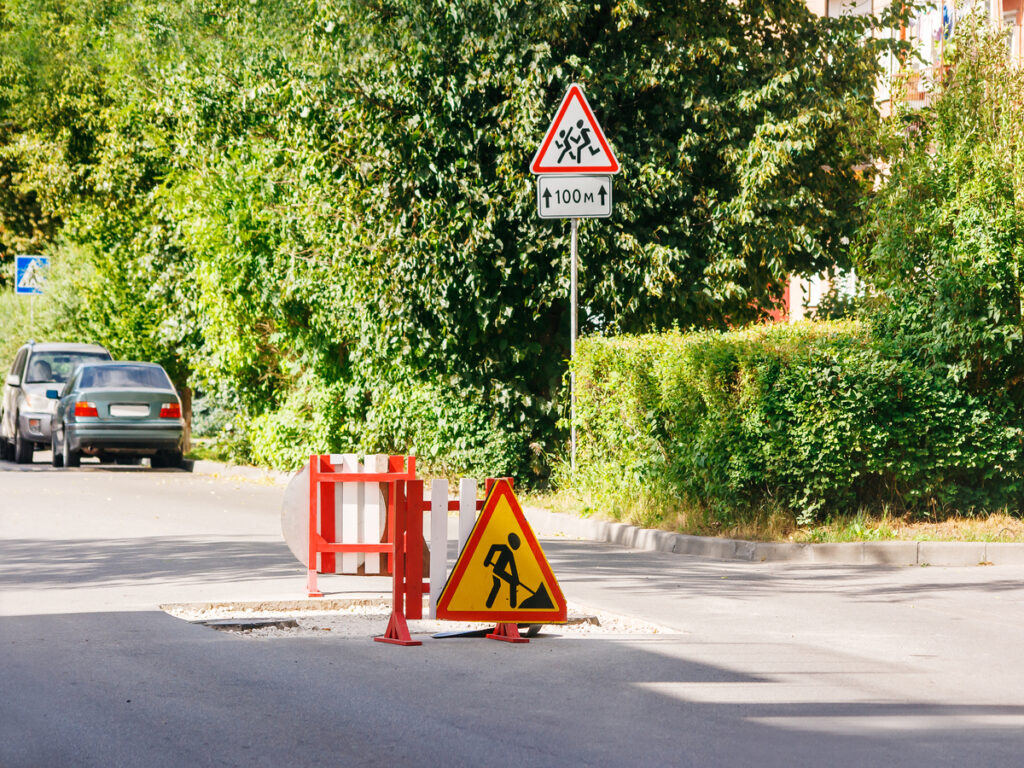
Meilleure sécurité pour les conducteurs et les travailleurs
Les cadres de panneaux de circulation conformes à MUTCD rendent les routes plus sûres pour tout le monde. Ces cadres répondent aux règles de taille, stabilité, et réflectivité. Matériaux réfléchissants, comme une feuille de qualité diamant, aider les conducteurs à voir les panneaux la nuit. They reflect car headlights, réduire les risques d'accident. Pendant la journée, Les couleurs vives rendent les signes faciles à repérer de loin. Ceci est très utile dans les zones de construction. Des panneaux clairs protégent les travailleurs et guident les conducteurs à travers ces zones en toute sécurité.
Note: Les signes réfléchissants aident les conducteurs plus âgés qui luttent en basse lumière. Les panneaux effacés facilitent également les intersections et les sorties, Améliorer le flux de trafic.
| Fonctionnalité | Description |
|---|---|
| ASTM D4956 Conformité | Répond aux normes de feuille de réflexion de type III et de type IV. |
| Durabilité | Un fort revêtement résiste aux rayures et aux dégâts. |
| Visibilité diurne | Les couleurs vives font que les panneaux se démarquent en lumière du jour. |
| Visibilité nocturne | Les matériaux spéciaux améliorent la visibilité sous les phares. |
| Impact environnemental | Les matériaux réfléchissants sont conçus pour être respectueux de l'environnement. |
Suivre les règles MUTCD crée des routes plus sûres pour tout le monde.
Protection juridique et moins de risques
L'utilisation de cadres conformes à MUTCD aide à éviter les problèmes juridiques. Les tribunaux voient la conformité MUTCD comme la preuve de bonnes pratiques de sécurité. Par exemple, en Californie, Les dispositifs de trafic appropriés sont des risques juridiques plus bas. À Washington, La plupart des poursuites sur les mauvais signes se sont réglées tôt, Souvent en raison de l'absence de violations MUTCD.
| État | Impact juridique |
|---|---|
| Californie | Les dispositifs de trafic corrects réduisent les risques juridiques. |
| Washington | La plupart des cas s'installent tôt en raison du manque de violations de MUTCD. |
| Texas | Peu de poursuites impliquent des problèmes MUTCD, Mais les cas d'entrepreneur se produisent. |
| Alabama | Meilleures avertissements de courbe réduisent les risques juridiques. |
L'utilisation de cadres conformes à MUTCD montre que vous vous souciez de la sécurité et réduit les problèmes juridiques.
Projets plus rapides et approbations plus faciles
Cadres de signe conformes à MUTCD rendre les projets plus rapides et plus faciles à approuver. Les agences préfèrent les projets qui suivent les règles MUTCD car elles garantissent un contrôle sûr du trafic. Les matériaux réfléchissants aident en restant visible et durable. Les projets avec des outils conformes évitent les retards causés par les refus.
Conseil: Utilisez des cadres pré-approuvés avec des matériaux réfléchissants certifiés pour respecter toutes les règles dès le départ.
La conformité MUTCD signifie également que moins de remplacements ou de correctifs sont nécessaires. Les matériaux durables gèrent le mauvais temps et l'utilisation lourde, gagner du temps et de l'argent. L'équipement fiable améliore la sécurité et réduit les coûts du projet.
En suivant les règles MUTCD, Vous pouvez terminer les projets plus rapidement et obtenir des approbations plus facilement. Cela garantit un contrôle de la circulation plus sûr et plus lisse.
Économiser de l'argent au fil du temps avec le bon équipement
Achat Mutcd-Les cadres de panneaux de trafic conformes vous aident à économiser de l'argent à long terme. Ces cadres sont construits pour durer, Vous n'aurez donc pas besoin de les réparer ou de les remplacer souvent. Choisir fort, Les cadres de haute qualité évitent les coûts supplémentaires de faibles ou mal fabriqués.
Pourquoi les cadres conformes à MUTCD coûtent moins cher
- Matériaux forts: Ces cadres sont durs et gèrent bien le mauvais temps. Ils ne rouillent pas, plier, ou s'estomper facilement, durable plus longtemps que les options moins chères.
- Moins d'entretien: Les panneaux réfléchissants restent brillants pendant des années. Vous n'aurez pas besoin de les remplacer souvent, ce qui permet d'économiser du temps et de l'argent.
- Moins de remplacements: Les cadres conformes à MUTCD restent stables dans le vent et la circulation lourde. Cela les empêche de se casser, Vous n'avez donc pas à en acheter de nouveaux souvent.
Conseil: Dépenser plus maintenant sur des cadres conformes à MUTCD permet d'économiser de l'argent plus tard. Des cadres durables durent plus longtemps et ont besoin de moins de fixation, Les faire valoir le coût.
Comparaison des coûts: Conforme vs. Cadres non conformes
| Fonctionnalité | Cadres conformes à MUTCD | Cadres non conformes |
|---|---|---|
| Durabilité | Construit pour durer | Se décompose rapidement |
| Feuille de réflexion | Reste brillant pendant des années | S'estompe rapidement |
| Frais de maintenance | Entretien bas nécessaire | Besoin de réparations fréquentes |
| Fréquence de remplacement | Rarement remplacé | Remplacé souvent |
L'utilisation de cadres conformes signifie dépenser moins pour les correctifs et les remplacements au fil du temps. Les cadres non conformes peuvent sembler moins chers au début, Mais ils se brisent plus souvent, coûter plus cher à la fin.
Avantages à long terme pour les projets
Les cadres conformes à MUTCD rendent les projets plus fluide. Des cadres forts empêchent les retards causés par des signes cassés ou manquants. Vous évitez également les amendes pour ne pas suivre les règles, ce qui peut ajouter des coûts de surprise.
Le choix des cadres conformes protège votre budget et continue de fonctionner en douceur. Cela permet d'économiser de l'argent tout en gardant les routes en sécurité et en répondant aux normes juridiques.
Meilleures pratiques pour suivre les règles MUTCD
Choisissez des cadres qui sont déjà certifiés
L'utilisation de trames déjà testées et certifiées est intelligente. Ces cadres répondent aux règles Mutcd pour la hauteur, stabilité, et visibilité. Ils sont testés pour s'assurer qu'ils fonctionnent bien dans des situations réelles. Le choix des cadres certifiés réduit les chances de briser les règles et maintient les routes plus sûres pour tout le monde.
Avoir les mêmes outils de circulation partout aide à protéger les routes. La Federal Highway Administration (Fhwa) dit que l'utilisation d'outils de sécurité éprouvés peut sauver des vies. Les stands de panneaux portables certifiés correspondent à ces objectifs de sécurité. Ils fonctionnent bien dans différentes situations de circulation et gardent les choses cohérentes.
Vérifiez la hauteur et la stabilité des signes sur le site
Les signes doivent être à la bonne hauteur pour être vu. Par exemple, dans les zones de marche, Les signes devraient être 7 feet high. Cela les maintient à l'écart des gens qui marchent. La stabilité est également importante. Les signes bancaux peuvent tomber et causer des problèmes.
Utilisez des outils comme la mesure des bandes pour vérifier la hauteur des signes. Ajouter des poids, comme des sacs de sable, Pour garder les signes stables par temps venteux. Les contrôles réguliers assurez-vous que les panneaux restent droits et faciles à voir, Même dans des conditions difficiles.
Inspectez les signes souvent pendant l'utilisation
La vérification des panneaux aide souvent à résoudre des problèmes tels que des panneaux déchaînés ou des panneaux inclinés. Certaines personnes se disputent de l'inspection pendant la journée ou la nuit. Les contrôles de nuit montrent à quel point les signes sont visibles dans l'obscurité. Les contrôles de jour aident les dommages à la tache ou les graffitis. Les deux types de chèques sont utiles.
Des choses comme la culture des plantes, intempéries, ou le vandalisme peut bloquer les signes au fil du temps. Les inspections régulières vous aident à résoudre ces problèmes rapidement. Cela continue de bien fonctionner les signes et suivant les règles. En vérifiant souvent les signes, Vous faites des routes plus sûres et évitez de enfreindre les règles MUTCD.
Apprenez à votre équipe sur les règles MUTCD
Enseigner à votre équipe Mutcd Les règles aident à garder les routes en sécurité. Il garantit également qu'ils savent configurer et gérer correctement les cadres de panneaux de trafic. Cela réduit les erreurs et rend les zones de circulation plus sûres.
Pourquoi l'enseignement est important
Sans formation, Les travailleurs pourraient manquer Key Mutcd règles. Par exemple, Ils pourraient placer des panneaux trop bas ou utiliser des matériaux qui ne reflètent pas la lumière. Ces erreurs peuvent provoquer des accidents, troubles juridiques, ou ralentir les projets. La formation aide votre équipe à apprendre la bonne façon de placer, sécurisé, et rendre les signes visibles.
Conseil: Tenez des leçons régulières pour maintenir votre équipe au courant Mutcd changements.
Que enseigner dans la formation
Concentrez-vous sur ces sujets importants pendant la formation:
- Placement des signes: Montrez comment placer des panneaux en fonction de la vitesse et des zones de marche.
- Matériaux réfléchissants: Expliquez pourquoi l'utilisation de matériaux réfléchissants est important pour la visibilité.
- Garder les signes stables: Apprenez à utiliser des poids ou des ancres pour empêcher les panneaux de tomber.
- Vérification des panneaux: Former les travailleurs à repérer et à résoudre des problèmes tels que des panneaux délavés ou des cadres tordus.
Comment s'entraîner efficacement
Utilisez différentes façons d'apprendre à votre équipe:
- Séances de pratique: Laissez les travailleurs installer et vérifier les panneaux dans une zone sûre.
- Outils visuels: Utilisez des photos et des vidéos pour expliquer Mutcd règles.
- Quiz: Testez leurs connaissances avec des questions simples.
- Formation sur place: Pratiquez dans de vraies zones de circulation pour résoudre de vrais problèmes.
Note: Tenez les registres de toutes les séances de formation pour suivre les progrès et assurer que tout le monde apprend.
En enseignant bien à votre équipe, Vous créez des routes plus sûres et suivez Mutcd règles. Une équipe qualifiée fait moins d'erreurs et gère mieux le contrôle du trafic.
Conseils pour obtenir un équipement conforme à Mutcd
Demandez la preuve de la conformité MUTCD
Lors de l'achat de cadres de panneaux de trafic, Demandez aux vendeurs la preuve qu'ils respectent les règles MUTCD. Cela garantit que l'équipement est sûr et fonctionne au besoin. Les vendeurs doivent montrer des preuves claires que leurs produits suivent les normes MUTCD pour la hauteur, stabilité, et réflectivité.
Chaque cas doit être examiné par le propriétaire ou ses ingénieurs. Ils doivent décider si les règles MUTCD s'appliquent et documentent leur raisonnement. Ce dossier peut aider si les litiges futurs surviennent sur l'utilisation de Mutcd.
Obtenir cette preuve protège votre projet contre les problèmes juridiques. Cela montre également que vous vous souciez de la sécurité et du suivi des règles.
Utilisez une liste de contrôle pour vérifier la conformité
Une liste de contrôle facilite l'achat de l'équipement conforme à MUTCD. Noter les règles MUTCD, comme la hauteur des signes, réflectivité, et la stabilité de cadre. Utilisez cette liste pour vérifier les fournisseurs et leurs produits. Par ici, Vous choisissez uniquement des équipements qui respectent les règles.
Par exemple, Votre liste de contrôle pourrait demander:
- Le cadre respecte-t-il les règles de hauteur pour les zones de marche et de conduite?
- Les matériaux réfléchissants sont-ils certifiés pour une visibilité à faible luminosité?
- Le cadre est-il assez fort pour gérer le vent et le temps?
Une liste de contrôle vous maintient organisée et vous garantit que vous ne manquez rien d'important.
Ajouter des règles MUTCD aux RFQ et aux contrats
Inclure les règles mutcd dans votre Demandes de devis (RFQS) et contractes. Cela dit aux vendeurs ce que vous attendez tout de suite. Il garantit également que l'équipement répond aux normes de sécurité et de performance.
- L'ajout de règles MUTCD améliore la sécurité et l'efficacité de la gestion des incidents de trafic.
- Les programmes de formation pour les répondeurs soulignent la nécessité de suivre les règles MUTCD.
- La nouvelle technologie de transport doit respecter les normes MUTCD pour aider les intervenants et gérer mieux les incidents.
En indiquant clairement ces règles, Vous évitez d'obtenir du matériel qui ne se conforme pas. Cela fait gagner du temps et empêche les retards coûteux.
Travailler avec des fournisseurs de confiance pour les équipements de sécurité routière
Choisir le bon fournisseur est la clé des routes plus sûres. Des fournisseurs de confiance comme l'optraffic vendre des produits testés qui répondent aux règles MUTCD. Ils offrent également des outils intelligents pour gérer le trafic et prévenir les accidents.
Les bons fournisseurs se concentrent sur la résolution des problèmes de trafic avec des outils spéciaux. Par exemple, Les écrans de vitesse radar aident les conducteurs à remarquer leur vitesse et à conduire en sécurité. Les panneaux d'arrêt à LED clignotants coupent les accidents par 41.5%, dit le ministère des Transports du Minnesota. Ces signes attirent l'attention et améliorent la sécurité aux intersections.
Les vendeurs expérimentés utilisent souvent une technologie de pointe. Le système de prévention de la mauvaise transmission de TrafficalM empêche les voitures de conduire dans le mauvais sens. Ce système utilise des conceptions intelligentes pour éviter les accidents. Balises d'arrêt-insign 54%. Leurs lumières vives rendent les signes faciles à voir dans l'obscurité.
Travailler avec des vendeurs qui connaissent les règles MUTCD garantissent que vous obtenez un équipement légal. Ces vendeurs aident également à la configuration et aux soins, Alors vous évitez les erreurs. Leurs produits durent longtemps et gèrent le mauvais temps, Économiser de l'argent sur les remplacements.
Choisissez les vendeurs avec une solide histoire de la sécurité de la circulation. Recherchez des entreprises offrant de nouvelles idées soutenues par la recherche. En faisant équipe avec des vendeurs de confiance, Vous pouvez rendre les routes plus sûres et suivre les règles MUTCD.
Les règles MUTCD aident à rendre les routes plus sûres et le flux de circulation mieux. Ils incluent deux types de sécurité: Concevoir la sécurité et la sécurité réelle.
| Concept | Signification |
|---|---|
| Sécurité de conception | Suivant les règles de conception de base des guides nationaux ou étatiques. |
| Sécurité réelle | Dans quelle mesure la sécurité fonctionne bien, comme réduire les accidents et les blessures. |
Utilisation d'outils approuvés, Vérification des configurations, Et choisir de bons fournisseurs peut empêcher les erreurs. Cette planification intelligente protège les routes et accélère les approbations du projet.
FAQ
1. Que signifie la conformité MUTCD pour les cadres de panneaux de circulation portables?
La conformité MUTCD signifie que les cadres de signe suivent les règles de sécurité nationales. Ces règles couvrent la hauteur, stabilité, réflectivité, et lisibilité. Les suivre rend les routes plus sûres, Évite les ennuis juridiques, et maintient le trafic en douceur dans les zones de travail.
2. Comment pouvez-vous vérifier si un cadre de panneau de trafic est conforme à MUTCD?
Demandez au vendeur la preuve que le cadre respecte les règles. Utilisez une liste de contrôle pour confirmer des choses comme la hauteur, réflectivité, et stabilité. Vous pouvez également vérifier le cadre sur place pour vous assurer qu'il suit les normes MUTCD.
3. Pourquoi le matériel réfléchissant est-il important pour les panneaux de circulation?
Les matériaux réfléchissants facilitent les panneaux la nuit ou par mauvais temps. Ils rebondissent sur les phares de la voiture, Aider les conducteurs à repérer les panneaux de loin. Mutcd établit des niveaux de luminosité pour garder les routes en sécurité pour tout le monde.
4. Que se passe-t-il si vous utilisez des cadres de panneaux de trafic non conformes?
L'utilisation de cadres non conformes peut causer des problèmes de sécurité, problèmes juridiques, et les retards. Les signes qui ne respectent pas les règles peuvent être difficiles à voir, tomber, ou être mal placé, conduisant à des accidents et des amendes.
5. À quelle fréquence devez-vous inspecter les cadres de panneaux de trafic sur le terrain?
Vérifiez les cadres de panneaux de trafic chaque jour pendant une utilisation à long terme. Assurez-vous qu'ils sont la bonne hauteur, écurie, et facile à voir. Recherchez des problèmes comme des panneaux fanés, Signes tordues, ou les dommages causés par la météo ou le vandalisme. Les contrôles réguliers gardent les routes en sécurité et conformes.

